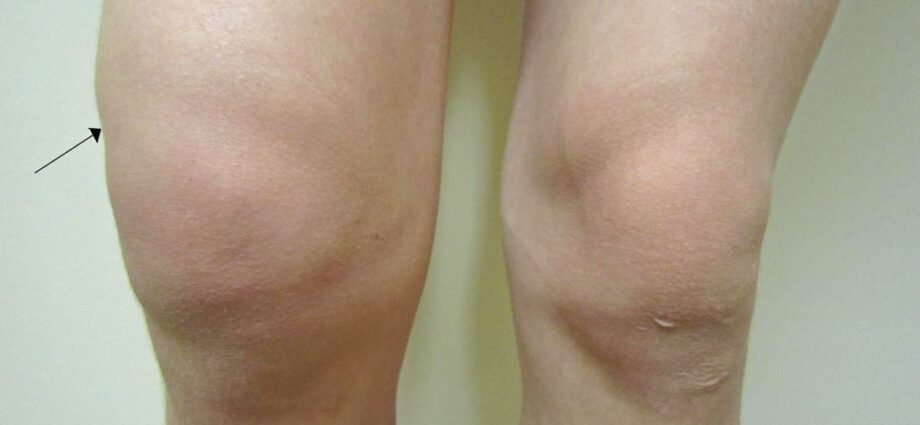Contents
Synovial effusion: what to do if there is synovial fluid in the knee?
Synovial effusion is a buildup of fluid that is characterized by swelling of the joint. It is usually located at the knee and causes pain and difficulty moving. It generally results from a major athletic effort, trauma or even osteoarthritis. The management of synovial effusion consists of fighting against its cause and acting on the pain.
What is a synovial effusion?
Synovial effusion is a condition that affects the joints, especially the knee.
Lubrication of the inside of the knee is provided by the synovial fluid or synovium, which is a clear yellow, transparent and viscous fluid, secreted by the cells of the tissue that line the joint, called the synovium. Besides lubricating the joint, the synovial fluid also has the role of nourishing the cartilage and cells, thus helping to reduce the wear and tear of the joint surfaces during friction.
In the case of a synovial effusion, also called hydarthrosis, too much synovial fluid is secreted in the joint spaces. This accumulation of synovial fluid is most often seen in the knee, but all mobile joints can be involved, such as the wrist, elbow, or even the ankle.
The synovial effusion mainly affects young people, especially athletes, but also musicians who are particularly exposed to synovial effusions from the wrist.
What are the causes of a synovial effusion?
Mechanical causes
The synovial effusion may be due to:
- osteoarthritis;
- sports trauma;
- significant sporting stress.
When there is damage to the cartilage or menisci, the membrane lining the pouch around the joint responds by producing a lot of fluid to further lubricate the joint.
When it comes to joint trauma such as a sprain or fracture, blood may be present in the synovia. It is in this case a hemarthrosis.
Inflammatory causes
Synovial effusion can occur when the synovium is diseased, following diseases of the synovial pouch and joints:
- arthritis;
- inflammatory rheumatism such as gout or chondrocalcinosis;
- rheumatoid arthritis ;
- complex autoimmune diseases;
- psoriatic arthritis.
What are the symptoms of a synovial effusion?
Symptoms of a synovial effusion may go unnoticed after stressing the joints. However, synovial effusion usually results in:
- swelling visible in the affected joint, of varying size, and more or less spherical in shape;
- pain, independent of the size of the swelling. Indeed, small effusions can be the most painful;
- loss or decrease in mobility of the joint, associated with pain, and hindering movement.
How to treat a synovial effusion?
The management of synovial effusion consists of fighting against its cause and acting on the pain.
It is first of all recommended to immobilize the affected joint and to put it at rest for analgesic purposes. Indeed, rest makes it possible to prevent the pocket containing the synovia from being under tension. But immobilizing the knee, or any affected joint, does not help the effusion resolve. An ice pack can also help lower inflammation. If the effusion is uncomplicated, a period of rest may be sufficient. If resting the joint is not sufficient, a puncture may be indicated to drain fluid from the joint.
Depending on the cause of the effusion, drugs may be indicated:
- antibiotic treatment in case of infection;
- taking anti-inflammatory drugs and analgesics, for two or three days, in the event of an inflammatory, large and painful effusion;
- corticosteroid infiltration or visco-supplementation (hyaluronic acid);
- performing arthroscopic surgery (joint cleaning) or prosthesis (total or unicompartmental knee prosthesis).
How to protect yourself from this?
To prevent sports trauma, it is recommended to:
- practice a sport adapted to his level;
- warm up before any physical activity.
For synovial effusions linked to osteoarthritis, the aim is to prevent the disease by acting on its main causes, namely aging and obesity.
To act against overweight, it is necessary to adopt an adapted lifestyle which makes it possible to limit excessive wear and tear on the joints: control or lose weight;
- opt for a firm mattress;
- practice an adapted and regular sporting activity;
- warm up before physical activity;
- avoid carrying heavy loads.










